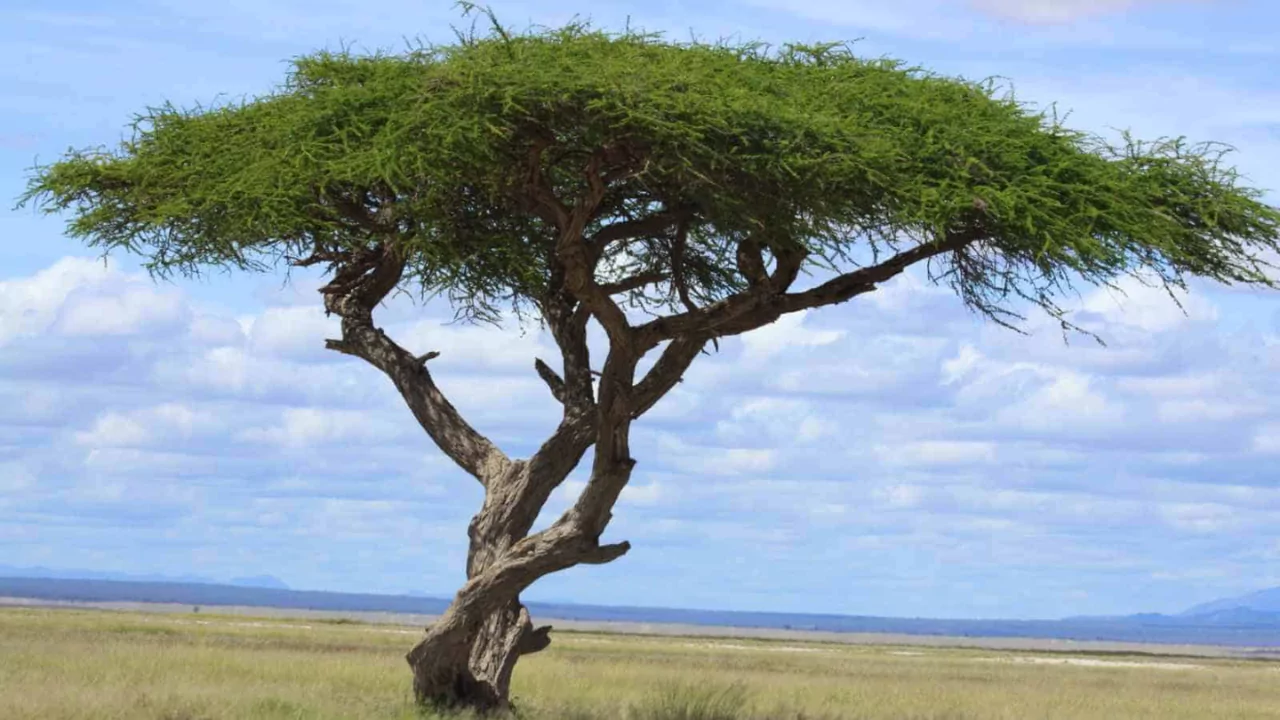
Acacia trees are found growing in some of the harshest climates alongside other subtropical vegetation. Areas that accommodate Acacia spp. include African savannahs, Arizona gullies, Australia where they are called wattles, as well as Hawaii and Central America.
Most acacia species reach 20 to 40 feet adding significant height quickly and gaining an evergreen weeping shape with slender leaves. While a little over 80 different species exist, most share common characteristics which include the evergreen weeping form and slender leaves.
In spring, acacias burst forth with puffball flowers which bloom in clusters and come in yellow or white colors; however along with thorns that protect them from nectar thieves like stinging ants, they can inflict injury too.
Leaves from the acacia serve as food for cattle and giraffes. Furthermore, these trees work great in home landscapes providing shade
The thorns from the acacias create some lawn litter but overall by itself can make for a unpleasant experience due to their lack of hospitality when it comes inviting wildlife out of your yard.
Acacia trees are quick to sprout but do not live long. Like many fast growing trees, their roots are shallow, and their wood is brittle. The trees may fall over or shed branches in strong winds. One can mitigate this risk through proper watering practices.
Planting Acacia Trees
Acacia trees can only be found naturally in USDA plant hardiness zones nine to eleven. For those residing in warmer climates, try a full sun location for your acacia tree.
Soil types will not pose many challenges since the tree tolerates various types; however, they favor well-draining sandy or gravel soils.
Most people tend to transplant nursery seedlings, although they can also be grown from seeds and divisions.
Best times to plant are spring or autumn. During the first season, water weekly until roots have established themselves after which watering is reduced to three weeks during dry weather.
Water the tree heavily while moving the hose around so you cover the entire area underneath the canopy of the tree. Light watering fails to encourage deep root formation making trees more susceptible to strong winds and uprooting.
Fertilize acacia trees in spring and mid-summer with ¼ cup of 10-10-10 fertilizer per dose.
Growing Acacia Trees
For the most part, Acacia trees are low-maintenance. Each year, prune to remove any dead or damaged wood. Remove any suckers that have grown and cut back branches that rub together. Regular pruning will help mitigate damage during windstorms by reducing serious breakage.
Anthracnose is one of the most damaging diseases acacia trees can suffer from, causing leaves to become spotted and weakening or even killing the tree in severe cases. Rake away leaf litter and dispose of it immediately.
If anthracnose is an issue, spray the affected tree with appropriate fungicide specifically labeled for use on anthracnose, following all package instructions.
The acacia tree’s most frequent insect pests include aphids, thrips and whiteflies. As with many other insects, these creatures cause damage by sucking the juices of the acacia’s leaves and stems. Most often, they will not require aid in moving along their journey.
If the injury is extensive, you may remove them from the tree’s surface by blasting it with water. Another method to treat the infested acacia would be spraying horticultural oil to smother these silver flies.
Spraying Oil Horticultural on larger trees poses a challenge as they are harder to manage and an overspray can do much harm. It is best to apply on cooler days, otherwise hot weather tends to burn foliage.
Apart from being simply interesting due to being different shaped compared to other trees or shrubs, Acacia trees serve double duty: as an extensively used food resource and wood supplier. Other than serving almost as gourmet Acacia Floristic gremlin magic for flooring pieces nowadays, extravagant oils are used in pelgrin funding sweets too like flavored gum infused mints and drinks frozen lemonades.